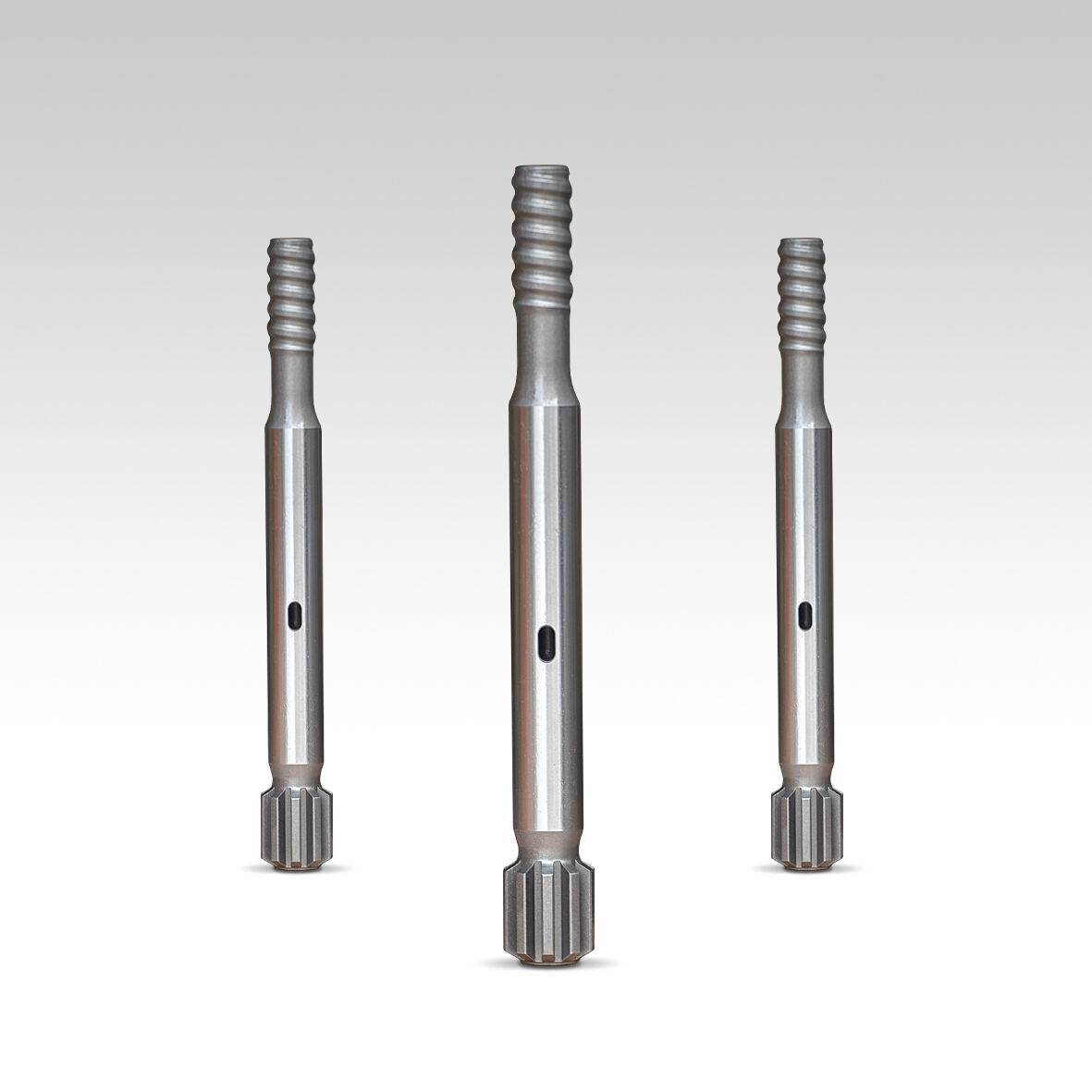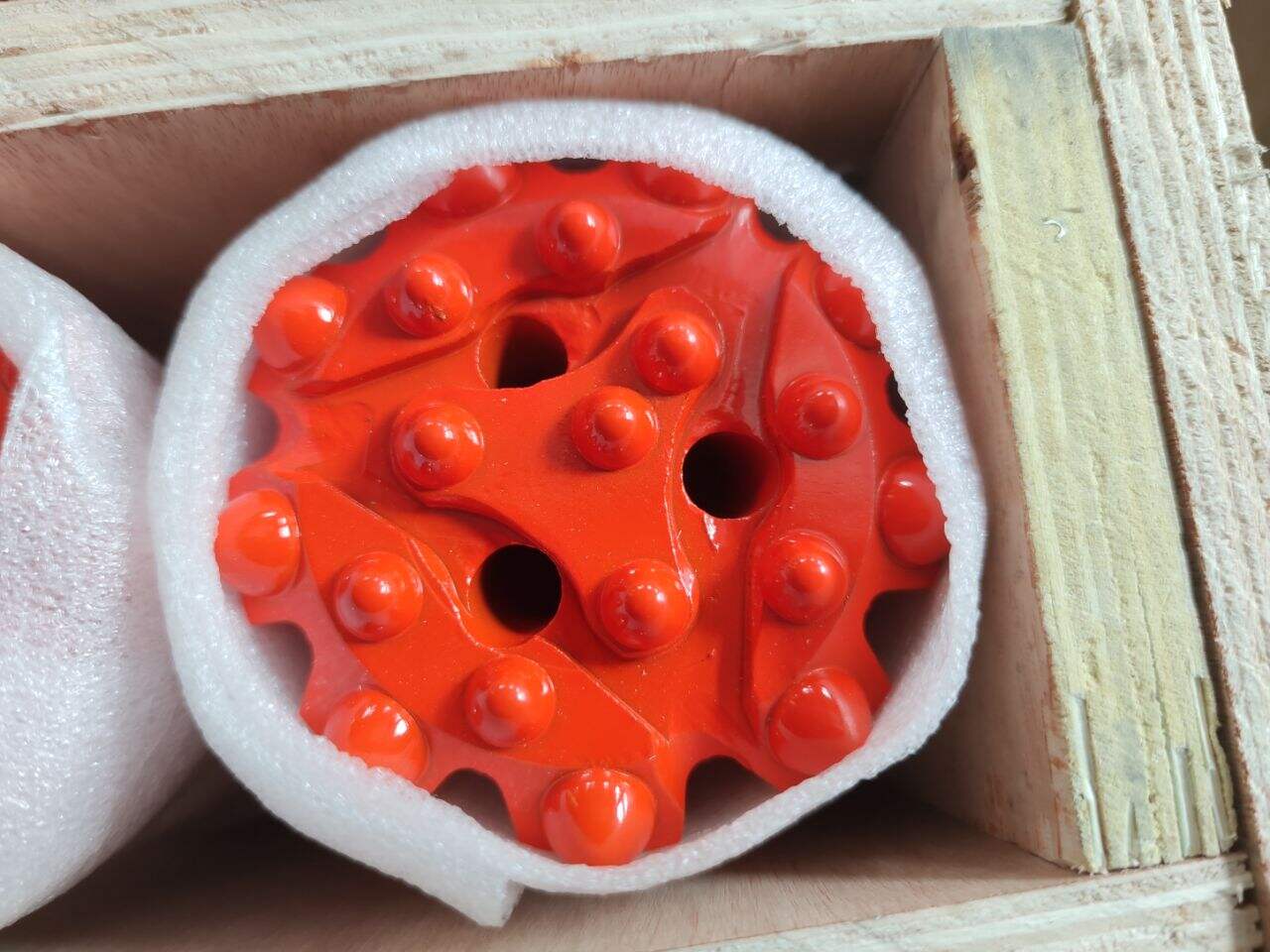Modern construction and mining operations demand precision, efficiency, and reliability in drilling applications. Among the various drilling techniques available today, top hammer drilling has emerged as a cornerstone technology that delivers exceptional performance across diverse geological conditions. This drilling method combines powerful percussive forces with rotational motion to achieve superior penetration rates while maintaining precise directional control. Understanding the intricacies of this technology can significantly impact project outcomes and operational efficiency.

Fundamentals of Top Hammer Technology
Operating Principles and Mechanics
The fundamental operation of top hammer drilling relies on the transmission of impact energy through a drill string to the cutting tool at the bottom of the hole. A pneumatic or hydraulic hammer generates rapid successive blows that are transferred through the drill rod assembly. This percussive action, combined with continuous rotation and flushing, creates an efficient drilling process that can penetrate various rock formations with remarkable effectiveness.
The energy transfer mechanism in top hammer systems is particularly noteworthy because it maintains consistent power delivery regardless of hole depth, up to practical limitations. Unlike other drilling methods where energy dissipation increases with depth, the direct coupling between the hammer and drill string ensures that maximum impact force reaches the drill bit. This characteristic makes the technology especially valuable for applications requiring consistent drilling performance across varying depths.
System Components and Configuration
A comprehensive top hammer drilling system consists of several critical components working in perfect synchronization. The rock drill serves as the primary power unit, generating the percussive energy necessary for rock fragmentation. The drill steel assembly, including shank adapters, extension rods, and coupling sleeves, forms the transmission pathway for transferring energy from the hammer to the cutting tool.
The drill bit represents the final component in the energy transmission chain and directly interfaces with the rock formation. Modern bit designs incorporate advanced carbide inserts and optimized face configurations to maximize cutting efficiency while minimizing wear rates. The selection of appropriate bit geometry and insert configuration significantly influences overall drilling performance and operational costs.
Applications and Industry Implementation
Construction and Infrastructure Projects
Construction industries extensively utilize top hammer drilling for foundation work, anchor bolt installation, and structural support applications. The precision and control offered by this technology make it particularly suitable for urban construction projects where accuracy and minimal vibration are critical requirements. Foundation drilling for high-rise buildings often relies on top hammer methods to achieve the precise hole positioning necessary for structural integrity.
Infrastructure development projects, including bridge construction, tunnel portals, and retaining wall installations, benefit significantly from the versatility of top hammer drilling systems. The ability to drill at various angles and maintain straight holes makes this technology indispensable for complex engineering applications. Additionally, the relatively compact size of top hammer equipment allows for operation in confined spaces where larger drilling rigs cannot access.
Mining and Quarrying Operations
Mining operations represent one of the largest application areas for top hammer drilling technology. Surface mining operations use these systems for blast hole drilling, where precise hole spacing and depth control directly impact blasting efficiency and rock fragmentation quality. The rapid drilling rates achievable with modern top hammer systems translate into significant productivity improvements and reduced operational costs.
Underground mining applications present unique challenges that top hammer drilling addresses effectively. The technology's ability to operate in confined spaces while maintaining high drilling rates makes it essential for development headings, stope preparation, and support installation. Modern mining operations increasingly rely on automated top hammer systems to improve safety while maintaining productivity in challenging underground environments.
Technical Advantages and Performance Benefits
Drilling Efficiency and Speed
One of the most significant advantages of top hammer drilling lies in its exceptional drilling speed across various rock formations. The direct energy transfer mechanism ensures that maximum impact force reaches the drill bit, resulting in superior penetration rates compared to alternative drilling methods. Modern top hammer systems can achieve drilling rates exceeding several meters per minute in medium-hard rock formations, significantly reducing project completion times.
The efficiency gains extend beyond raw drilling speed to include reduced setup times and simplified operation procedures. Operators can quickly change drilling directions, adjust hole depths, and modify drilling parameters without extensive equipment reconfiguration. This operational flexibility translates into measurable productivity improvements across diverse drilling applications.
Precision and Accuracy Control
Precision drilling requirements in modern construction and mining operations demand exceptional accuracy control that top hammer systems deliver consistently. The rigid coupling between the drill and the rock face minimizes deviation and ensures straight hole trajectories even in challenging geological conditions. This accuracy is particularly crucial for applications requiring precise hole positioning, such as anchor bolt installation and structural foundation work.
Advanced feed systems integrated with modern top hammer rigs provide precise depth control and consistent advancement rates. Operators can maintain uniform hole spacing and achieve target depths with minimal variation, ensuring compliance with engineering specifications and safety requirements. The combination of accurate positioning and consistent drilling parameters contributes significantly to overall project quality and structural integrity.
Equipment Selection and Optimization
Matching Systems to Application Requirements
Successful implementation of top hammer drilling requires careful consideration of equipment specifications relative to specific application requirements. Rock hardness, drilling depth, hole diameter, and production requirements all influence the selection of appropriate hammer size, drill steel specifications, and support equipment. Understanding these relationships enables operators to optimize system performance while minimizing operational costs.
The selection process must also consider environmental factors such as working space limitations, power availability, and mobility requirements. Portable top hammer units offer flexibility for smaller projects or confined workspace applications, while larger stationary systems provide maximum power output for high-production drilling operations. Balancing these factors ensures optimal equipment utilization and project success.
Maintenance and Operational Considerations
Proper maintenance protocols are essential for maximizing the performance and service life of top hammer drilling equipment. Regular inspection of drill steel components, hammer mechanisms, and support systems prevents costly failures and ensures consistent drilling performance. Implementing structured maintenance schedules based on operating hours and drilling conditions helps maintain peak system efficiency.
Operational best practices include proper steel handling procedures, appropriate flushing medium selection, and systematic monitoring of drilling parameters. These practices not only extend equipment life but also contribute to improved drilling performance and reduced operational costs. Training programs for operators and maintenance personnel ensure consistent application of these best practices across all drilling operations.
Future Developments and Technology Trends
Automation and Smart Systems
The evolution of top hammer drilling technology increasingly incorporates automation and intelligent control systems that enhance operational efficiency while improving safety outcomes. Modern drilling rigs feature automated positioning systems, adaptive drilling parameter control, and real-time performance monitoring capabilities. These advances reduce operator fatigue while maintaining consistent drilling performance across extended operating periods.
Integration of sensor technology and data analytics provides unprecedented insights into drilling performance and equipment condition. Predictive maintenance systems can identify potential component failures before they occur, minimizing unplanned downtime and maintenance costs. This technological evolution positions top hammer drilling at the forefront of modern drilling technology advancement.
Environmental and Sustainability Considerations
Contemporary drilling operations must address environmental concerns while maintaining productivity and cost-effectiveness. Modern top hammer systems incorporate noise reduction technologies, dust suppression systems, and energy-efficient designs that minimize environmental impact. These improvements align with increasingly stringent environmental regulations while supporting sustainable development practices.
The development of electric and hybrid power systems for top hammer drilling equipment represents a significant step toward reducing carbon emissions and operating costs. These alternative power sources maintain drilling performance while offering quieter operation and reduced environmental footprint. Such innovations ensure that top hammer drilling remains relevant in an increasingly environmentally conscious industry landscape.
FAQ
What makes top hammer drilling more efficient than other drilling methods
Top hammer drilling achieves superior efficiency through direct energy transfer from the hammer to the drill bit, eliminating energy losses common in other drilling methods. The percussive action combined with rotation and flushing creates optimal rock fragmentation while maintaining consistent performance regardless of hole depth up to practical limitations.
How do I select the appropriate top hammer system for my project
System selection depends on several factors including rock hardness, required hole diameter, drilling depth, and production requirements. Consider workspace limitations, power availability, and mobility needs when choosing between portable and stationary systems. Consulting with equipment specialists ensures optimal system configuration for specific application requirements.
What maintenance practices are critical for top hammer equipment longevity
Critical maintenance practices include regular inspection of drill steel components for wear and damage, systematic lubrication of hammer mechanisms, and monitoring of flushing system performance. Implementing structured maintenance schedules based on operating hours and drilling conditions prevents costly failures while maintaining peak system efficiency throughout equipment service life.
Can top hammer drilling systems operate effectively in confined spaces
Yes, top hammer systems are particularly well-suited for confined space applications due to their compact design and operational flexibility. Portable units can access areas where larger drilling equipment cannot operate, making them ideal for urban construction projects, underground mining operations, and specialized industrial applications requiring precise drilling in limited workspace conditions.

